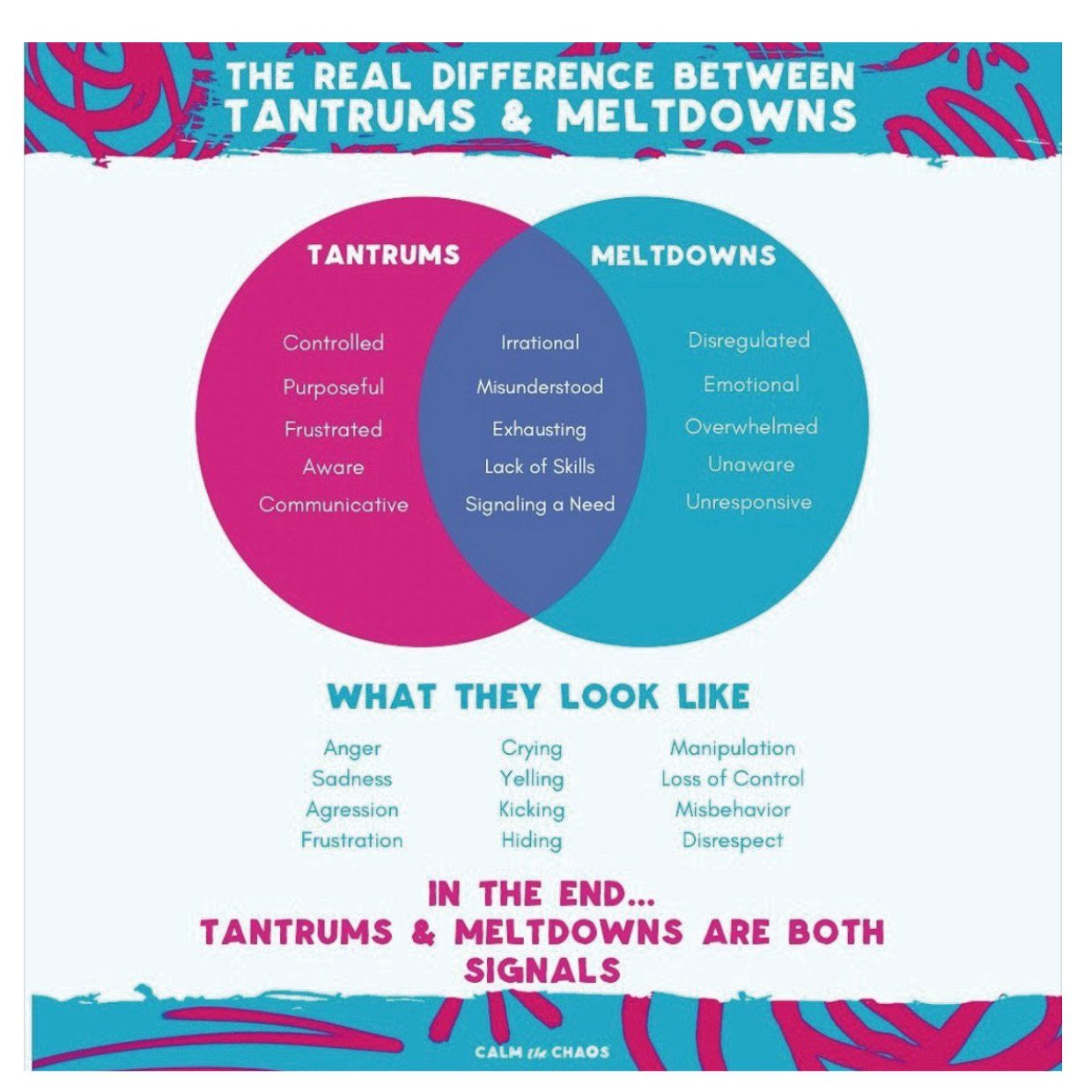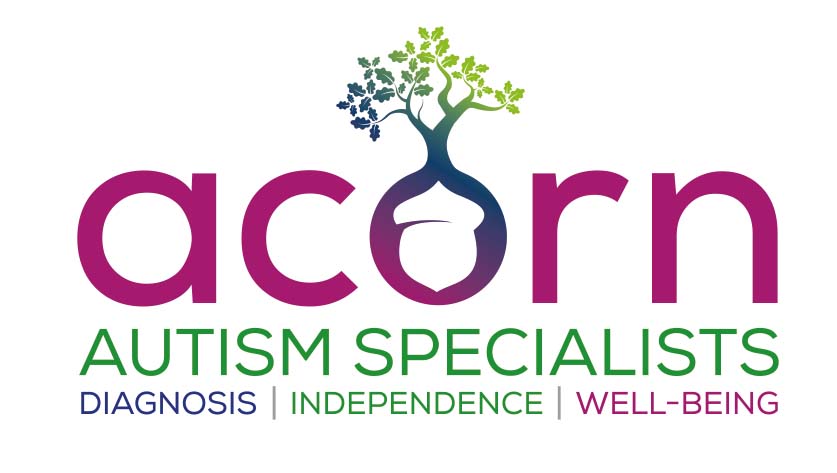Meltdowns and shutdowns are often the result of situations which are highly stimulating or create high levels of anxiety which feel like they can't be escaped. When someone is in this situation their reaction is either flight, fight or freeze. If the person cannot escape that leaves two options: either fight or freeze.
Meltdowns are similar to the fight response. When an autistic person is having a meltdown they often have increased levels of anxiety and distress which are often interpreted as frustration, a 'tantrum' or an aggressive panic attack. However, it's important to understand that meltdowns are not 'temper tantrums'. They are a reaction to a highly distressing situation or environment.

While in a meltdown a person can be injurious to others or themselves because of the extreme state of anxiety their body is in. That's why it's really important to minimise the risk of this happening - both for the person and those around them.
Meltdowns are very physically tiring and emotionally draining for the individual. This is because the person has been in a distressing situation and has had a highly adrenalised and emotionalised response. Meltdowns can therefore sometimes lead to a shutdown.
If meltdowns are equivalent to the fight response, then shutdowns are similar to the freeze response.
They are often the result of situations with high demand in one or a few of the following areas:
- social situations
- situations that require a lot of thinking
- lack of sleep
- very emotional situations
- situations that are very active or physical
An analogy for a shutdown is like a computer trying to turn on but it can't because there isn't enough power to do so. In a shutdown an autistic person might not seem themselves because they're so overwhelmed that their focus has shifted to the basic functions. During shutdown, a person may either partially or completely withdraw from the world around them. They may not respond to communication anymore, become mute or have difficulty forming coherent sentences, retreat to their room or lie down on the floor. They may also no longer be able to move from the situation they are in, no matter what it is (for example, a shopping centre or a classroom). Shutdowns tend to be more discreet than meltdowns, and may sometimes go unnoticed. However, like meltdowns, they are a person’s response to reaching crisis point.
Sometimes, meltdowns can turn into shutdowns. A person may show outward expressions of stress to begin with, then withdraw until their stress levels have reduced. In these cases, it is important to remember that the withdrawal itself isn’t a sign that stress levels are reduced, but may be a necessary step for the autistic person to recover from the situation.












